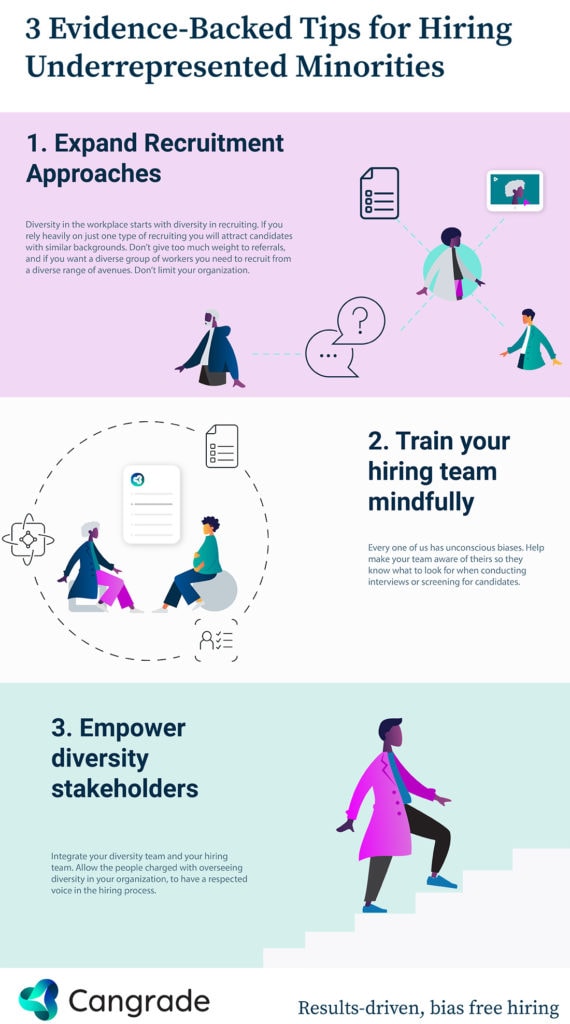3 Evidence-Backed Tips for Hiring Underrepresented Minorities
Racial discrimination in hiring remains a pervasive barrier to equity in the workplace. But organizations are increasingly voicing their desire to address the disadvantages that underrepresented minorities face in the hiring process and grow the diversity of their teams. Because strong diversity management requires collaboration between organizations and researchers, here are three evidence-based tips for hiring underrepresented minorities in the workplace.
1. Expand Recruitment Approaches
Organizations that are racially homogenous and rely heavily on referrals for hiring risk forming a referred applicant pool with a similar demographic makeup to their existing talent pool. To increase representation, organizations should target recruitment efforts at more diverse networks. For example, college recruitment efforts that focus on historically black schools have been linked to an overall increase in black men and women at the managerial level in organizations.
Companies also shouldn’t restrict their hiring to candidates from elite university backgrounds. Limiting hiring this way can lead to the overrepresentation of privileged racial and socioeconomic backgrounds in new hires. To widen their pipelines, hiring teams should consider reaching out to local community colleges that serve underrepresented communities.
2. Train Your Hiring Team Mindfully
Properly training your hiring team or committee to combat hiring biases and inequities and clearly laying out your current employee demographics and goals for representation is an important step in increasing the likelihood of hiring underrepresented minorities.
Research on faculty hiring searches suggests that supporting a hiring committee with psychology-based approaches may increase diverse hires. One of these approaches includes trying to boost the committee’s competency by sharing a strategy guide for diverse hiring. Another is to increase the committee’s autonomy by empowering them to gain better control over possible biases hiring teams may face. This may be done through supplemental education, like a presentation on the role of implicit bias in the hiring process
3. Empower Diversity Stakeholders
Diversity stakeholders should examine whether they can reliably hold hiring teams accountable for maintaining equitable hiring processes. An analysis of diversity recruitment practices in elite organizations found a disconnect between employees tasked with hiring decisions and those tasked with overseeing diversity goals. To remedy this, scholars recommended that those in charge of diversity programs be given the power and status required to meaningfully shape the hiring process for fair and equitable outcomes.
Removing obstacles for applicants from underrepresented minority groups in the hiring process goes beyond these three tips. Because different underrepresented groups experience unique challenges, it is critical that hiring managers supplement these tactics with practices for specific racial minority groups within their organization (e.g., using a specific practice to address the “bamboo ceiling” for hiring Asians into leadership positions). Ultimately, organizations should pair acquiring diverse talent with a larger-scale investment in diversity management, so that organizations can provide a safe and inclusive culture that respects and retains their employees.
